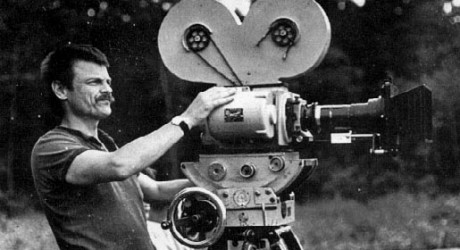Many film fans wish we could have a director like Ingmar Bergman working today. Just as many television fans surely wish we could have a talk show host like Dick Cavett working today. But both Bergman, who died in 2007, and Cavett, who still writes but seems to have put televisual pursuits behind him, produced substantial bodies of work. And, thanks to the internet, you can experience their films and broadcasts even more easily than when they first appeared. Take, for instance, this 1971 Dick Cavett Show episode featuring the curious and dry-witted conversationalist’s interview with the Swedish maker of such pictures still viewed widely and enthusiastically as The Seventh Seal, The Virgin Spring, Persona, and Fanny and Alexander. No enthusiast of serious conversation about film would want to miss the hour when these two men’s worlds collide. But we get an insight into more than these men’s worlds: partway through the episode, and to the delight of Bergman’s fans, actress Bibi Andersson turns up.
Eventually to star in more than ten Bergman pictures, including Persona, The Magician, and The Passion of Anna, Andersson appears ostensibly in promotion of her and Bergman’s then-most recent collaboration, The Touch. “Does he understand women?” Cavett suddenly asks Andersson, who replies with every interviewer’s bête noire, the one-word answer: “Yes.” Bergman then explains his conviction that women possess greater natural acting ability and comfort with the craft than men do. “Acting,” he says, “is a very special woman’s profession.” The full conversation reveals more about the filmmaker’s surprising feminism, as well as his childhood fear of movies, his lifelong fear of drugs, his views on punctuality, his on-set temper, his struggles with restless leg syndrome, the pride he takes in his soap commercials, his homeland’s supposed preponderance of beautiful women, and how many more films he intends to make. “Five, maybe six,” the director guesses. “Make it six, could you?” asks the host. He ended up making twelve.
All parts of Ingmar Bergman on The Dick Cavett Show: part one, part two, part three, part four, part five, part six
Related Content:
Ingmar Bergman’s Soap Commercials Wash Away the Existential Despair
How Woody Allen Discovered Ingmar Bergman, and How You Can Too
Colin Marshall hosts and produces Notebook on Cities and Culture and writes essays on literature, film, cities, Asia, and aesthetics. He’s at work on a book about Los Angeles, A Los Angeles Primer. Follow him on Twitter at @colinmarshall.




